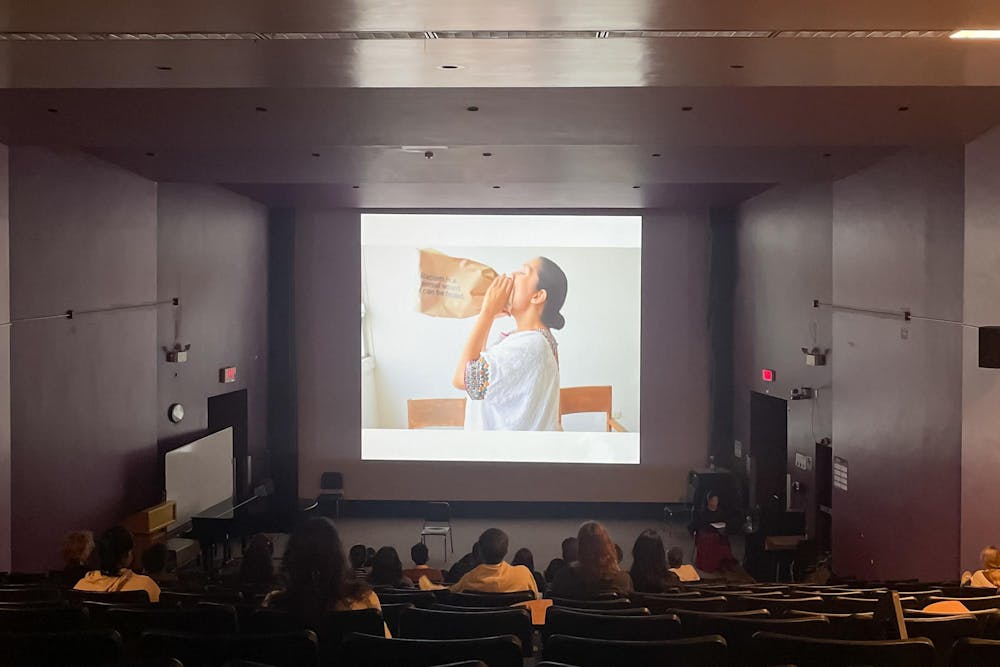For Guatemalan and Mayan Q’eqchi’ multimedia artist Sandra Monterroso, art is inextricable from life.
Monterroso, who describes herself as a thinker and researcher, delivered a talk on Thursday titled “Decolonial Threads: From Healing and Thinking Life through Art” as part of the Hanes Visiting Artist Lecture Series.
The Visiting Artist Lecture Series brings established and emerging artists to UNC’s campus to discuss their work and help students learn about varying pathways of art-making.
“Whoever writes, makes manuscripts, whoever paints, sculpts, makes music — is alive first,” she said during the lecture.
Monterroso shared video and photo selections of her performance, sculpture and textile art, accompanied by verbal reflections called sentipensar, or feeling-thinking.
An idea central to her art creation is the sharing of ancient knowledge to heal what she called the “colonial wound” — a phrase which she said encompasses the genocide of Indigenous peoples in the Americas, the destruction of traditional knowledge and the ecocide of local environments.
“The main question would be how do we heal these historical wounds, these cultural wounds, these colonial wounds? By finding other epistemologies,” she said during the lecture. “For example, in my thinking-feeling — sentipensar in Spanish, as I said — for artistic practice, I enter into Maya Q’eqchi’ wisdom — Indigenous spirituality — as a methodology for healing. That is, I approach this other wisdom in order to interpret it from the symbolic space of art.”
She said she comes from a postwar generation in Guatemala, where dictatorships enforced silence through censorship.
“For our generation it was very important to express ourselves, and performance art was a media where we can say that through our bodies,” Monterroso said.



